Configure Initial Node Settings
This topic describes how to configure essential server settings as part of the initial Tableau Server installation process.
Prerequisite
Before proceeding with the procedures in this topic, complete the following prerequisites as outlined in Install and Configure Tableau Server:
After you have activated and registered Tableau Server, the installation program will display the Setup page.
Note: If you need to configure Tableau Server to connect to an LDAP directory that is not Active Directory, then you must use the TSM CLI.
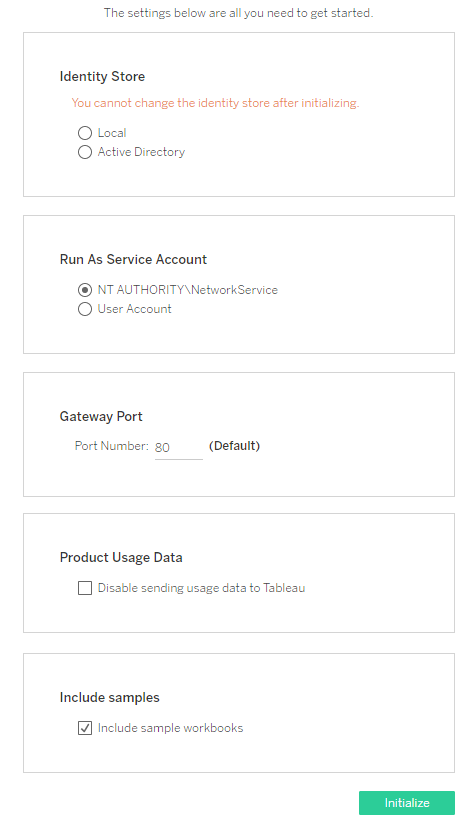
Identity store settings
You must configure the identity store settings for the Tableau Server computer. The identity store manages Tableau Server accounts. You can configure the identity store to synchronize with an external directory (for example, OpenLDAP or Active Directory) or you can configure the identity store to manage and store accounts on Tableau Server. If you will be using a single sign on solution (OpenID, SAML, Kerberos, etc) then review the following topics before configuring the identity store:
Important: After you have configured and applied settings for the identity store, it cannot be changed.
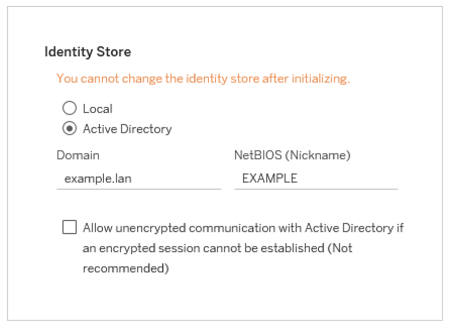
If you select Active Directory, Tableau Server will populate the Domain and NetBIOS fields from the computer on which you are running Setup. In some cases, Setup may not display these attributes. For more information about how Tableau Server connects and communicates with Active Directory, see User Management in Deployments with External Identity Stores.
Allow unencrypted communications with Active Directory
Your Active Directory infrastructure should manage certificates and trust with domain-joined computers. As such, the channel communication between Tableau Server and Active Directory resources should be encrypted. By default, Tableau Server requires an encrypted channel to Active Directory. We do not recommend allowing unencrypted communications with Active Directory, as this configuration is vulnerable to man-in-the-middle attacks. However, in some deployment scenarios, organizations do not encrypt the channel during initial configuration. Should you need to temporarily allow unencrypted communication with Active Directory, you can re-enable enforcement of encrypted communication later by running the tsm command, wgserver.domain.allow_insecure_connection , or by logging into TSM UI and toggling the setting under User Identity & Access > Identity Store.
Run As service account
By default, Tableau Server runs under the Network Service account. To use an account that will accommodate NT authentication with data sources, specify a user name and password. See Run As Service Account to learn more about creating and using a specific user account.
Important: Include the domain name with the user name—for example, example\tableaurunas.
Enter the password that you created for this account.
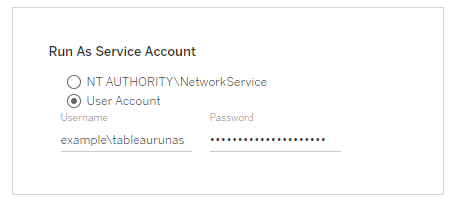
Gateway port
The default port for web access to Tableau Server (via HTTP) is port 80. If the installation program determines that port 80 is in use when you first install Tableau Server, an alternate port (for example 8000) is used and shown in the Port number box.
You may need to change the port for other networking needs, for example, if you have a hardware firewall or proxy in front of the Tableau Server host, this might make running a back-end system on port 80 undesirable.
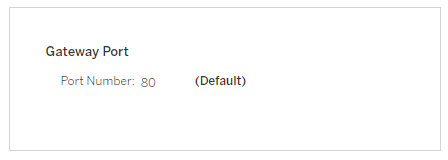
Product usage data
By default, Tableau Server shares usage data with Tableau that helps us better understand how you use our products, improve your overall experience, and build highly intelligent features that make Tableau even more powerful.
Clear this option if you do not want usage data sent to Tableau.

You can also change this setting after installation, on the TSM Maintenance tab in the TSM Web UI, or using the TSM CLI. For more information, see Server Usage Data.
Sample workbook installation
By default, Tableau Server will install sample workbooks in the Default site when you initialize the server.

Alternatively, you can publish samples after installation by using the publishsamples tabcmd command.
Initializing install
After you have configured the options on this page, click Initialize.
The initialization process can take a while. When initialization is complete the following page is displayed:
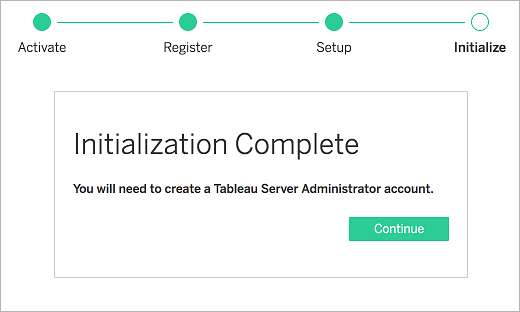
Next Step
After initialization is complete, create the Tableau Server administrator user account. See Add an Administrator Account.
